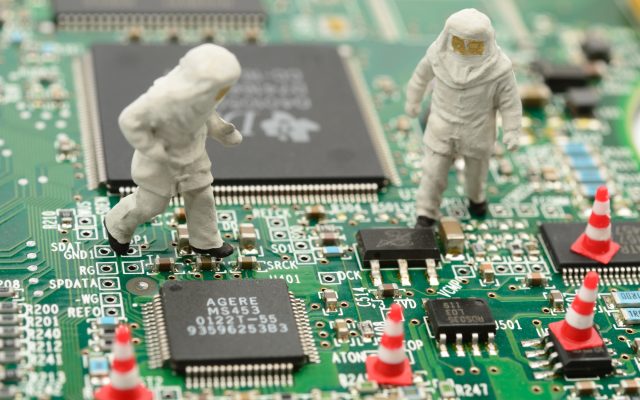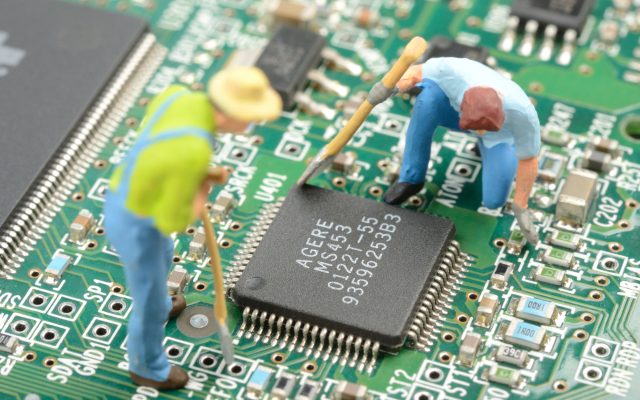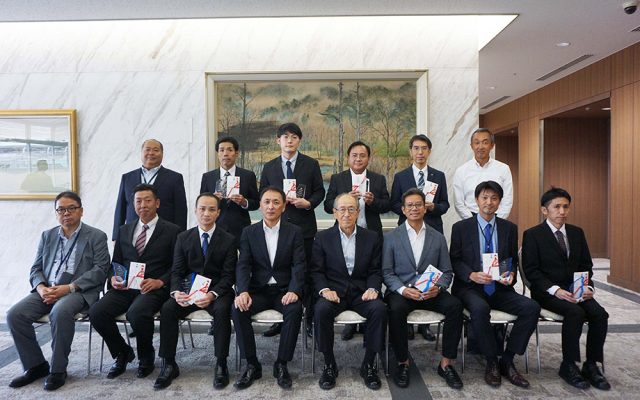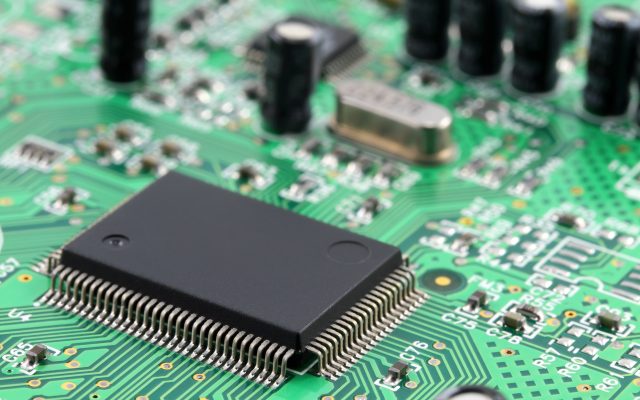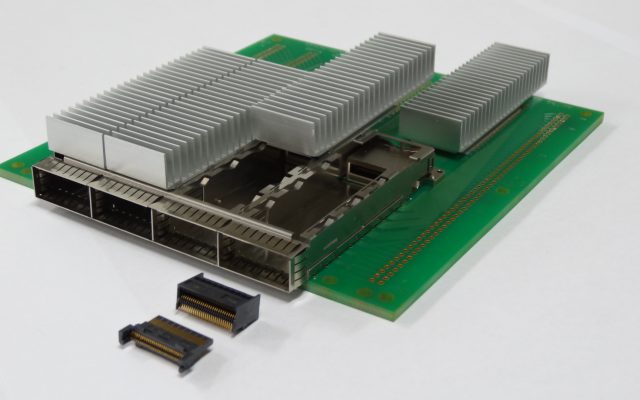Semiconductors are used in all kinds of daily necessities, from home appliances to automobiles, not to mention PCs and smartphones. It is no exaggeration to say that high-quality semiconductors now support our comfortable and safe lives.
There are approximately 400 to 600 processes in semiconductor manufacturing, and various inspections are performed throughout the processes. Among them, Yamaichi Electronics’ IC sockets, which boast the world’s top market share, are playing an active role in the final inspection of semiconductors.
As the quality of semiconductors continues to improve, IC sockets play a vital role in determining the quality of semiconductors.
What is an IC socket for inspection use?
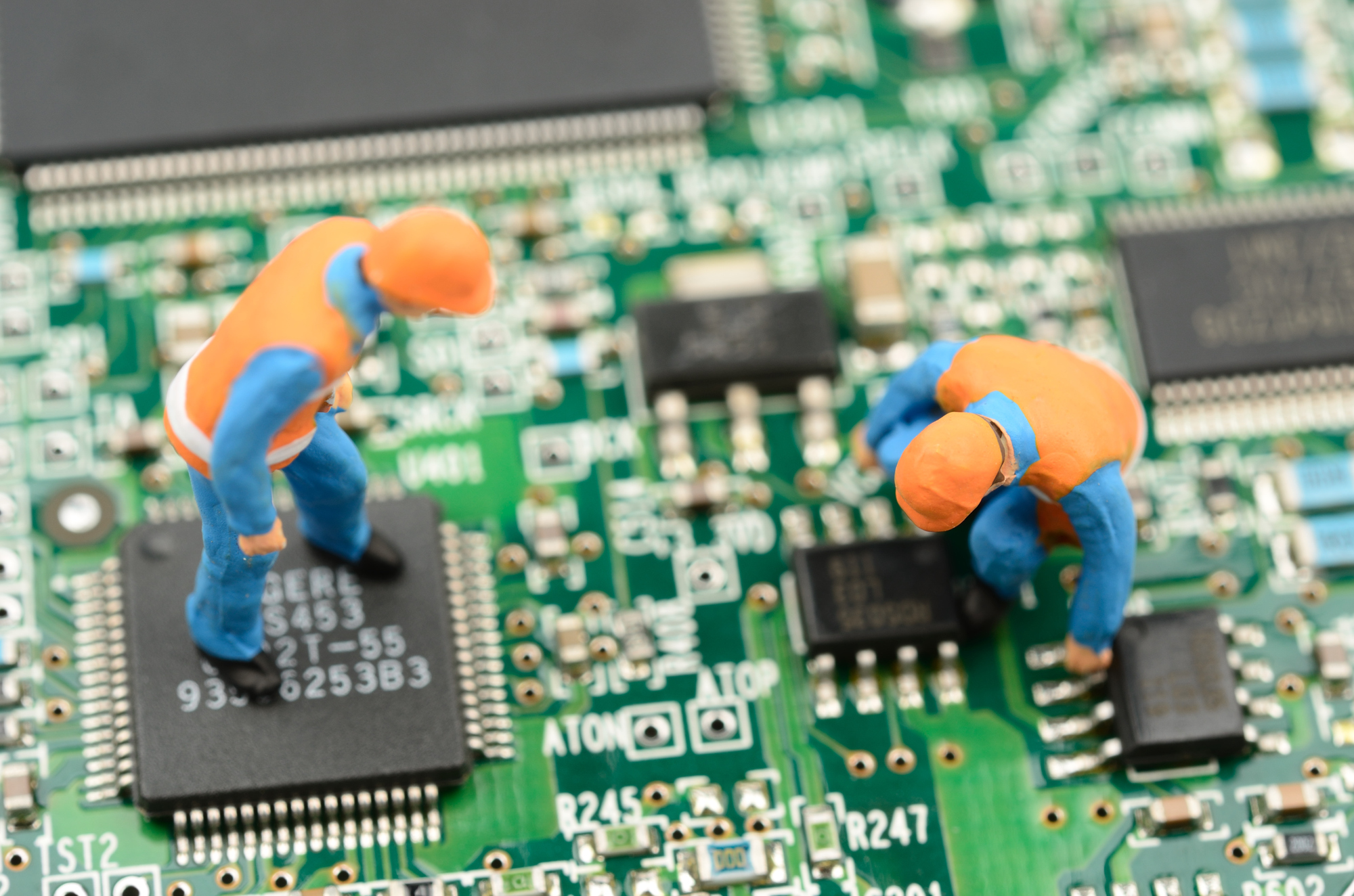
The semiconductor inspection process can be roughly divided into wafer inspection in the front-end process and finished product inspection in the back-end process.
IC sockets are jigs (fixing tools) used for IC inspection in the back-end process and are also called “IC sockets for inspection” or “sockets for semiconductor inspection.”
IC sockets connect ICs (semiconductor packages) to inspection equipment. Using an IC socket makes it possible to test ICs without mounting (soldering) them to PCBs.
* What is a semiconductor package?
A semiconductor package protects an entire IC chip by encasing it in resin, making it easier to solder the IC chip to a board and assemble the circuitry. Various standards and shapes are available to suit different applications.
Knowing the types of IC sockets for inspection use
There are two types of IC sockets for inspection use: burn-in sockets, which are used for semiconductor burn-in tests (temperature and voltage load tests), and test sockets, which are used for product inspections.
Since these semiconductor tests are performed repeatedly, IC sockets that allow easy insertion and removal of ICs play a key role.
Burn-in Sockets
Burn-in sockets are IC sockets for burn-in tests, often used to mount ICs on test boards (i.e., burn-in boards).
Burn-in testing examines the quality of semiconductors by subjecting them to temperature and voltage stress in a high-temperature environment.
Burn-in sockets, used repeatedly in high-temperature environments, require high durability and workability.
What is required of a burn-in socket
- Contact technology for a stable connection between IC and inspection board
- Repeated durability in high-temperature environments
- Workability in mass production lines
Test Sockets
Test sockets are IC sockets for product inspection and are used to mount ICs on inspection equipment.
Testing involves examining the electrical characteristics of semiconductors to check for functionality and defects in the final products.
Why is it necessary?―Purpose of the burn-In test using burn-in sockets
The burn-in test is a temperature-voltage test performed in the final process of semiconductor manufacturing.
Multiple ICs are placed in burn-in sockets on a test board and subjected to a temperature and voltage load of 125°C to 180°C for several hours to screen initial defects.
A burn-in test has two purposes: 1) Reliability improvement and 2) Yield improvement.
Purpose 1) Improving the reliability of semiconductors through burn-in testing
The burn-in test intentionally causes initial defects to prevent defective products from being released to the market.
It is used to inspect semiconductors that require high reliability, such as semiconductors for automotive, aerospace, and social infrastructure.
Purpose 2) Improving semiconductor yields through burn-in testing
A burn-in test is used to sort out good and bad ICs.
It is used to inspect semiconductor memory with a low yield rate (low percentage of good products) for PCs, smartphones, home appliances, etc. A burn-in test is also used to inspect power semiconductors that supply and control electric power.
The future of burn-in sockets―Semiconductor trends and needs
Burn-in sockets are indispensable for improving the quality of ICs, and demand for burn-in sockets is growing rapidly as semiconductor production increases.
Especially in automotive and IT, where technological innovation is remarkable, the needs for burn-in sockets are becoming more and more diverse.
Automotive Innovation and Burn-in Sockets
With the technological innovation known as CASE in the automotive industry, the development of semiconductors with higher performance than ever before is being promoted.
Since failures of these semiconductors for automotive applications can lead to serious accidents, burn-in tests under severe conditions are essential.
Therefore, burn-in sockets that support burn-in tests are also required to have higher durability.
* What is CASE?
A term coined from an acronym for Connected, Autonomous/Automated, Shared, and Electric.
IT and Burn-in Sockets
With the spread of the IoT (Internet of Things) and 5G (the fifth-generation mobile communication system), semiconductor memory speed and capacity are increasing.
With the advent of a full-fledged digital society in the 2020s, it is said that 50 billion IT devices will be connected to the Internet, and the demand for semiconductor inspection will continue to increase.
In line with the mass production of semiconductors, there is a need for burn-in sockets with higher workability to support automation.
If you are looking for a wide variety of burn-in sockets to support the world’s semiconductor manufacturing, please feel free to contact us.
As there are diversified needs for burn-in sockets, Yamaichi Electronics has developed a variety of burn-in sockets for as many as 13,000 types of semiconductors.
Yamaichi Electronics supports improvements in the quality of semiconductors worldwide with its advanced contact technology that reliably connects inspection equipment and ICs.
Please feel free to contact us if you have any questions about our semiconductor test solutions, from high-mix burn-in sockets in small volumes to custom-made burn-in sockets for special ICs.

